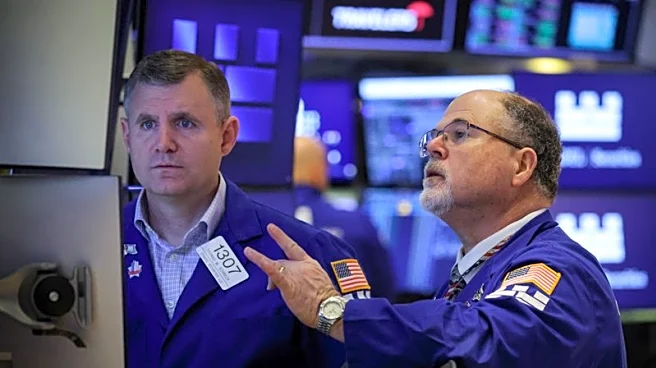What's Happening?
The U.S. dollar experienced its sharpest gain in six weeks following the release of Federal Reserve minutes that suggested a December rate cut is less likely. This development led to a decline in the yen,
which fell to a 10-month low against the dollar. The yen's depreciation is partly due to comments from Japan's Finance Minister Satsuki Katayama, who indicated no specific discussion on foreign exchange during a meeting with the Bank of Japan Governor. The yen has been under pressure despite rising Japanese yields, as markets are concerned about the borrowing required to fund Prime Minister Sanae Takaichi's stimulus plans. The euro, sterling, and other currencies also fell against the dollar, influenced by the Fed's hawkish stance.
Why It's Important?
The strengthening of the U.S. dollar has significant implications for global markets and trade. A stronger dollar can impact U.S. exports by making them more expensive for foreign buyers, potentially affecting trade balances. Additionally, the dollar's rise influences currency markets worldwide, affecting exchange rates and international investment flows. For Japan, the yen's weakness could lead to increased import costs, affecting consumer prices and economic stability. The Fed's indication of a less likely rate cut reflects confidence in the U.S. economy, which may influence investor sentiment and financial markets. The divergence in monetary policy between the U.S. and other countries, such as New Zealand, highlights differing economic outlooks and strategies.
What's Next?
Market participants will closely monitor upcoming economic data and Fed communications for further insights into U.S. monetary policy. Any changes in rate cut expectations could lead to volatility in currency markets. Japanese authorities may consider intervention if the yen continues to weaken significantly, especially if it approaches critical levels. Investors will also watch for developments in other major economies, as their monetary policies could influence global currency dynamics. The ongoing analysis of economic indicators will be crucial in shaping future expectations and strategies for both policymakers and market participants.














